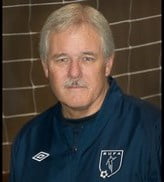Sideline Advantage Secrets
After reading the “Keeping Everyone in the Game” article, I was reminded of some coaching strategies I used with my teams that worked wonders …
As a coach, I always wanted my players to feel involved, even when they weren’t playing. Assigning them to observe and analyze the game helped keep them focused—and quieter. Parents were happier, too, knowing their kids were in the game mentally, even from the sidelines!

And here’s where I pulled a few tricks out of my coaching hat to keep everyone sharp and ready …
Warming Up Minds and Bodies
I learned that warm-ups aren’t just for the body—the mind must also be activated! I noticed that sometimes my teams didn’t start “thinking” until 10-15 minutes into the game. To tackle that, my pre-game routine combined physical exercises with decision-making activities.
- 🔄 Juggling and Passing: We’d start with 10 minutes of juggling and light passing to get comfortable with the ball.
- ⚽ Mini-Sided Games: I’d set up small fields with cones for 3v3 games, allowing players to adjust to the weather and encourage quick decision-making.
- 🧘 Stretches & Hydration: We’d finish with stretches and hydration. Here’s the twist—I rotated leadership roles, giving each player a chance to lead warm-ups, which boosted their confidence.
Tip: Rotating leadership roles during warm-ups gives players a sense of responsibility, helping them mentally prepare for the game.
My Secret to Successful Substituting
Keeping substitutes involved wasn’t just about passing time—it was an opportunity for them to sharpen their observation skills. Here’s how I involved my bench players:
Sideline Assignments I Used:
- 🔍 Observe and Analyze: I had each sub watch the player they’d replace, tracking one (1) of the following: running, passing, dribbling, or shooting. This kept them engaged and mentally prepared for their turn.
- ⚔️ Opponent Analysis (For Older Players): I upped the challenge by asking them to study their opposite number—what were their strengths and weaknesses? We’d discuss adjustments they could make when entering the game. This helped the players going in and those coming off the field, adding to their development.
Tip: Substitutes often noticed things I missed, which helped them—and me—make better tactical decisions when they entered the game.
Learning and Growing Together
Post-game discussions were key to my team’s development. After the final whistle, we always had a quick cool down and reflection session.
- 🏃 Cooldown and Stretch: We’d start with a light jog and stretches to bring everyone down from game intensity.
- 💬 Team Review: Every player had to contribute during our 5-minute review session, sharing something they noticed about the game—whether about themselves, a teammate, or the overall match. This made the reflection process more interactive and gave every player a voice.
- 🍦 Ice Cream Tradition: Win or lose, we’d end with ice cream. It wasn’t just about celebrating wins; it was a reminder that effort and learning were more important than the final score.
Tip: Post-game reviews encouraged my players to take ownership of their development. Sharing their thoughts made them more attentive and involved in their improvement.
🧠 Learning Alongside Players
This approach didn’t just benefit the players—it also helped me as a coach! Observing from the bench while encouraging players to do the same provided insights I could use to adjust tactics on the spot. Sometimes, players would notice things I hadn’t caught, and their observations were incredibly useful.
🧐 Sideline Insights
Giving substitutes meaningful tasks during the game isn’t just about keeping them occupied—it’s a chance to sharpen their minds while they wait to play. Keeping them engaged reduces distractions and creates a quieter, more focused sideline. Plus, it gives players a head start on learning, so they’re mentally prepared to jump in when it’s their time.
Tip: Involving players in observation and analysis during games builds their confidence. They’ll feel more prepared when they step on the field, knowing they’ve been actively learning instead of just passively watching.
💭 Making the Most of Every Opportunity
I’ve always tried to make the most out of every situation—call it multitasking or maybe just avoiding extra work! 😊 About 20 years ago, I started giving more responsibility to the players, and it worked wonders. They responded well, taking pride in their tasks, and it changed the dynamics of my teams.
One more thing: I learned by accident that if a player was disruptive, giving them a leadership role—like leading warm-ups—made a huge difference. Engaging them rather than reprimanding them turned their attitude around, and they gained a new appreciation for the coach’s role. Once they experienced what it’s like to lead, they were more understanding when others caused disruptions. Two positives from one negative!
Giving kids leadership roles kept them focused and enthusiastic—it’s amazing how taking charge helps them stay on task! It turns out that multitasking isn’t their strong suit just yet! 😄
💡 I hope this response gives fellow coaches some ideas for keeping substitutes learning and improving, even when they’re on the bench. It’s a simple but powerful way to build a smarter, more engaged team. Keep those minds sharp, and everyone stays in the game—whether on the field or not!





